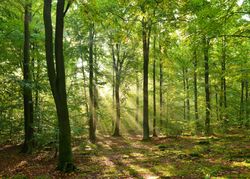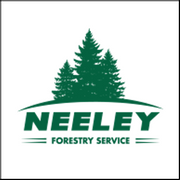What Is the Importance of Tree Marking?

While out walking one day, you might spot markings on trees. In some cases, these signs indicate the presence of a forest management team that is using the colored indicators to denote their wishes to logging teams. Here, you’ll find a guide to tree marking to help you understand the meaning of these signs and how forest management works.
What Is Tree Marking?
Forest management teams create silviculture prescriptions or executive plans that are made for the exact area they’re assessing. This information includes which trees are to be removed versus which should be left behind to mature. These professionals indicate the future of the tree by adding markings, such as painted dots or colored flags, to share their intentions.
Forest managers mark trees using at least two different colors. Orange or yellow are usually found on those to be cut by a sawyer or logging team. Another hue is added to those that will be left standing.
 In some cases, a third color marking will indicate trees that provide wildlife habitat and should not be cut down. This additional marking may point out organisms with cavities where animals or birds are living. If the species is important to tree health or plays a major role in the ecosystem, the forester may opt to leave it’s home intact. Loggers see these tree markings and know how to follow the site-specific plans to encourage healthy growth.
In some cases, a third color marking will indicate trees that provide wildlife habitat and should not be cut down. This additional marking may point out organisms with cavities where animals or birds are living. If the species is important to tree health or plays a major role in the ecosystem, the forester may opt to leave it’s home intact. Loggers see these tree markings and know how to follow the site-specific plans to encourage healthy growth.
Why Is It Important?
People often have the misconception that size is the only indicator of whether a tree is ready to be harvested. In reality, there are many factors used by forest management teams to establish which organisms should be culled versus which should continue to grow.
Often, a larger tree can limit the amount of light and nutrients smaller trees are getting. Part of forest management means assessing these situations and deciding when to cut one organism in the interest of those around it. Maintaining a healthy silviculture prescription requires ensuring there is adequate light for as many trees as possible to encourage regeneration and growth. Trees also may be cut because they’re too big, ready to be made into lumber, in the way of a planned roadway or building, or diseased and could pass their illness on to others in the forest.
If you have a property that you’d like appraised for timber potential, contact Neeley Forestry Service in Camden, AR. Whether you’re looking to have better sight lines while hunting or you’re hoping to develop land, their talented team can help you manage the forest to promote healthy growth and a thriving ecosystem. To learn about their tree planting, management, and lumber offerings, call (870) 836-5981. Visit their website for information on their wide range of forest management services, like boundary line establishment, growth and yield modeling, prescribed burning, and GPS mapping.
About the Business
Have a question? Ask the experts!
Send your question

